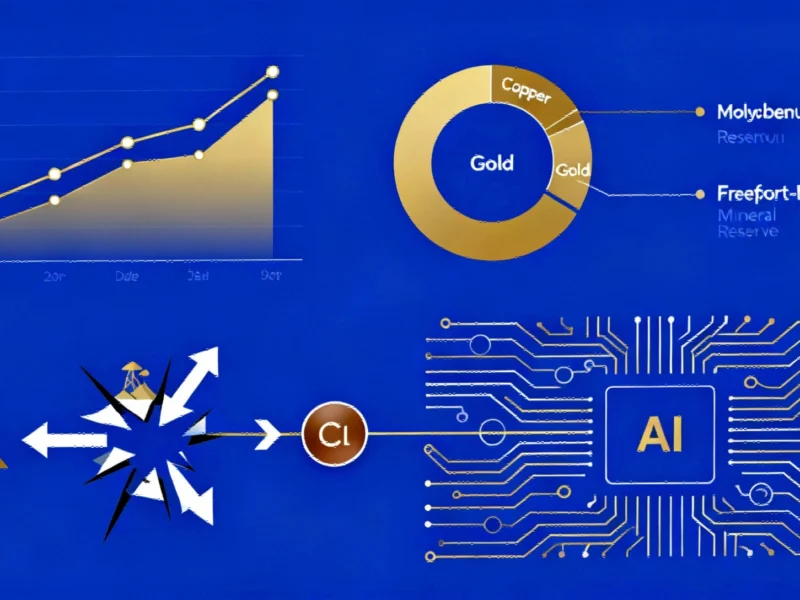Mirroring American Trade Strategies
China is reportedly adopting tactics similar to those long used by the United States in the ongoing trade war between the world’s two largest economies, according to trade analysts and policy experts. Sources indicate that Beijing has been developing and deploying legal tools that closely resemble American trade policies, creating what observers describe as a mirror approach to economic confrontation.
The recent expansion of Chinese export rules on rare earth elements represents the latest example of this strategy, analysts suggest. The new regulations require foreign companies to obtain Chinese government approval for exporting magnets containing even minimal amounts of China-origined rare earth materials or produced with Chinese technology. This approach reportedly parallels the U.S. foreign direct product rule, which extends American legal reach to foreign-made products.
Learning from U.S. Precedents
According to reports, China began developing these countermeasures systematically after the Trump administration initiated trade tensions in 2018. “Beijing is copying Washington‘s playbook because it saw firsthand how effectively U.S. export controls could constrain its own economic development and political choices,” said Neil Thomas of the Asia Society Policy Institute’s Center for China Analysis, who noted that “game recognizes game” in this escalating economic confrontation.
The Chinese Ministry of Commerce’s Unreliable Entity List, established in 2020, reportedly resembles the U.S. Commerce Department’s entity list that restricts certain foreign companies from American business relationships. Similarly, China‘s 2021 anti-foreign sanction law enables agencies like the Chinese Foreign Ministry to deny visas and freeze assets of targeted individuals and businesses – capabilities similar to those held by the U.S. State Department and Treasury.
Expanding Legal Toolkit
Analysts suggest that Beijing has been studying foreign legislation while developing its response mechanisms. The state-run China News agency in 2021 described the approach as “hitting back with the enemy’s methods,” citing ancient Chinese teaching. According to the report, Chinese scholar Li Qingming stated the law “has combed through relevant foreign legislation and taken into consideration the international law and the basic principles of international relations.”
Jeremy Daum, senior research scholar at Yale Law School’s Paul Tsai China Center, noted that Beijing often draws from foreign models when developing laws, even in non-trade areas. As China seeks retaliatory capabilities in trade and sanctions, the tools are often “very parallel” to those of the U.S., he stated. Both governments have adopted a “holistic view of national security” that expands the concept to justify restrictions, according to his analysis of trade war dynamics.
Recent Escalations and Responses
When the Trump administration returned to the White House and reignited trade tensions, Beijing reportedly deployed its new tools alongside matching tariffs. In February, the Chinese Commerce Ministry placed PVH Group, owner of Calvin Klein and Tommy Hilfiger, and biotechnology company Illumina on its unreliable entity list. This followed Trump’s first 10% tariff over allegations regarding fentanyl-related chemicals.
The response barred these companies from China-related import/export activities and new investments in the country. Beijing also announced export controls on tungsten, tellurium, bismuth, molybdenum and indium – elements critical to high-tech manufacturing.
Subsequent rounds saw additional U.S. firms added to Chinese restriction lists, including aerospace and defense companies like General Dynamics Land Systems and General Atomics Aeronautical Systems. Beijing asserted these companies “endanger China’s national security and interests,” mirroring language often used in U.S. restrictions against Chinese firms.
Economic Implications and Risks
The expanded controls on rare earth minerals have reportedly disrupted global supply chains, affecting manufacturing of products ranging from smartphones and electric vehicles to jet planes and missiles. According to U.S. Trade Representative Jamieson Greer, the rules give China control over “basically the entire global economy in the technology supply chain” since even South Korean smartphone makers must seek Beijing’s permission to sell devices containing Chinese rare earth materials to markets like Australia.
While these tools have allowed China to counter U.S. measures effectively, analysts suggest they carry significant risks. Daum noted that “the dangers in such a facially balanced and fair approach are, one, what one side sees as reciprocity the other might interpret as escalation.” He added that in such economic conflicts, nobody ultimately wins in a “race to the bottom.”
The ongoing confrontation continues to evolve as both nations develop new economic tools. Recent industry developments suggest the technological dimensions of this conflict may expand further, affecting multiple sectors beyond traditional trade goods. Market trends indicate that companies worldwide are adjusting their supply chains in response to these escalating measures between the economic superpowers.
This article aggregates information from publicly available sources. All trademarks and copyrights belong to their respective owners.
Note: Featured image is for illustrative purposes only and does not represent any specific product, service, or entity mentioned in this article.



